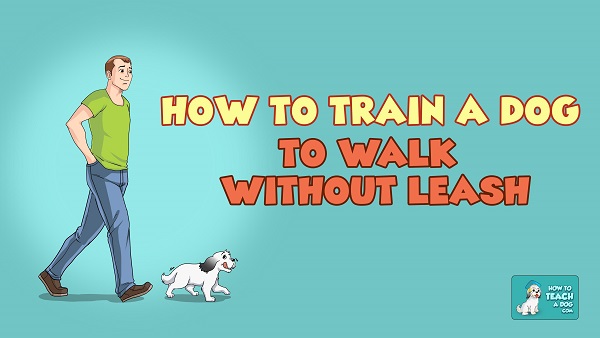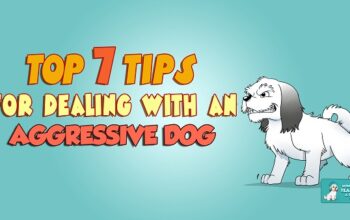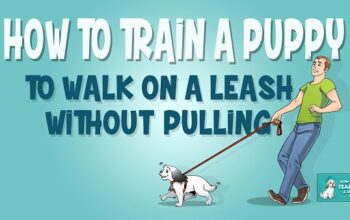
Off-leash walking falls under the advanced dog training category. In order to safely walk off-leash, dogs will need to learn to hold positions for a certain amount of time, respond to commands around distractions and from a distance. Not all dogs are ready for this type of training and some dogs may pose more challenges than others.
Scent hounds and sight hounds for instance, were selectively bred to work at a distance from hunters, and the mere scent or sight of prey animals may get them instinctively running totally oblivious to your pleading requests to come back to you. If you’re lucky though to have a biddable dog and you are patient, consistent and committed, you can train your dog to walk off leash and you may attain reliable results too as long as you adhere to certain rules.
Step 1: Start Working in a Safely Fenced Area
Since you are training, it’s best to start off-leash practice within a safe, fenced enclosure. After all, how can you train your dog to be off leash if he’s always on a leash? Just like you can’t learn to ride a bike using a stationary bike, your dog can’t learn off leash training by being always on leash. Within a safely fenced area, your dog can be finally off leash, and should he decide to take off, he won’t get far, and best of all, he won’t be exposed to any dangers.
Don’t worry, you and your dog won’t be stuck in a fenced area forever. As your dog improves and the training advances, you can then work in larger and larger fenced areas with an increasing level of distractions. The fenced area for now will help you “test the waters” and determine how trustworthy your dog may be off leash without taking major risks.
Step 2: Work on Proofing Your Reliable Recall
When your dog is off leash within the safely enclosed area, you can work on proofing some important voice commands. You don’t necessarily have to rely on voice commands though, some people like to use whistles. One of the most important commands for off-leash training is the reliable recall, a command that simply tells your dog to come to you no matter what.
This means being able to call your dog away from highly distracting situations such as from a fleeing animal, people and other dogs. You don’t want your dog taking off after wild animals, other hikers and livestock guardian dogs when you hike! Also, consider that for many dogs who aren’t used to being off leash, freedom may feel quite exhilarating especially at the beginning, and calling them away from all the fun may sort of feel like a punishment. Always make sure to make wonderful things happen when you call your dog!
Step 3: Reward Voluntary Check-Ins
When your dog is off leash, pay close attention to those moments when he wanders around a bit and then decides on his own will to come check on you. Make sure you acknowledge these voluntary check-ins and praise and reward your dog when he does. With time and practice, you should see your dog checking on you more and more. When behaviors persist and increase in frequency, it’s an indicator that you are reinforcing them correctly.
If you don’t see many voluntary check-ins, ask yourself if perhaps you are not rewarding him enough. Chances are, your dog may find other stimuli around you much more interesting than you. To succeed, you’ll have to compete with these environmental stimuli. Praise lavishly and use high-value treats and change them from time to time to add an element of surprise.
Step 4: Work on Proofing Your Stop Command
While a reliable recall is important for an off-leash dog, it’s equally important to have a dog capable of stopping on command, even from a distance. Unlike the recall, where your dog comes running promptly to you, a dog that stops on command stops moving. This command can turn into a life saver should your dog ever be in a situation where you do not want him to cross a road or chase a dangerous animal.
The stop command may simply mean your dog freezes into a stand position, immediately sits and stays or immediately lies down and stays waiting for you to release him. If you wish, you can combine the stop with the recall command by training your dog to stop on command and then releasing him with your recall command. This way, your dog gets two forms of reinforcement: first, he’s free to move about again which for most dogs is rewarding, and next, he gets rewarded for coming to you.
This can be turned into a fun game and you can get a nice level of control. It may sound quite ironic, but dogs who really get to reap the rewards of off-leash freedom are ultimately those who are better under control!
Step 5: Work on Proofing Your Heel Command
There may be times when you want your off-leash dog to stay in heel position. For instance, you may be on a hike and you may encounter other people. It’s not really nice if your dog runs up to them, and even though you may reliably call him back, people may be scared of a dog that’s getting ready to approach them off leash. It could also happen that you hear wildlife nearby and want your dog to stick to your side to keep him safe from wandering. Before going on hikes, practice getting your dog to heel around distractions.
As seen, off-leash training requires you to train a combination of commands to keep your dog safe and these commands must be under strong stimulus control before going on off-leash outings. The more you train around distractions in your fenced areas, the more prepared your dog will be to confront them in real-life situations so it’s not a bad idea to invite friends and have other dogs cross your path as you work within the safely confined areas.
Remember though that despite all the effort you put into training, no level of training can keep your dog 100 percent safe, so choose the areas where you keep your dog off-leash wisely. It would be risky business of course to purposely walk your dog off-leash near a road full or traffic or in a place frequented by hunters! Also, consider that not all places allow off leash dogs, so play it safe, respect others and adhere to your local laws.


